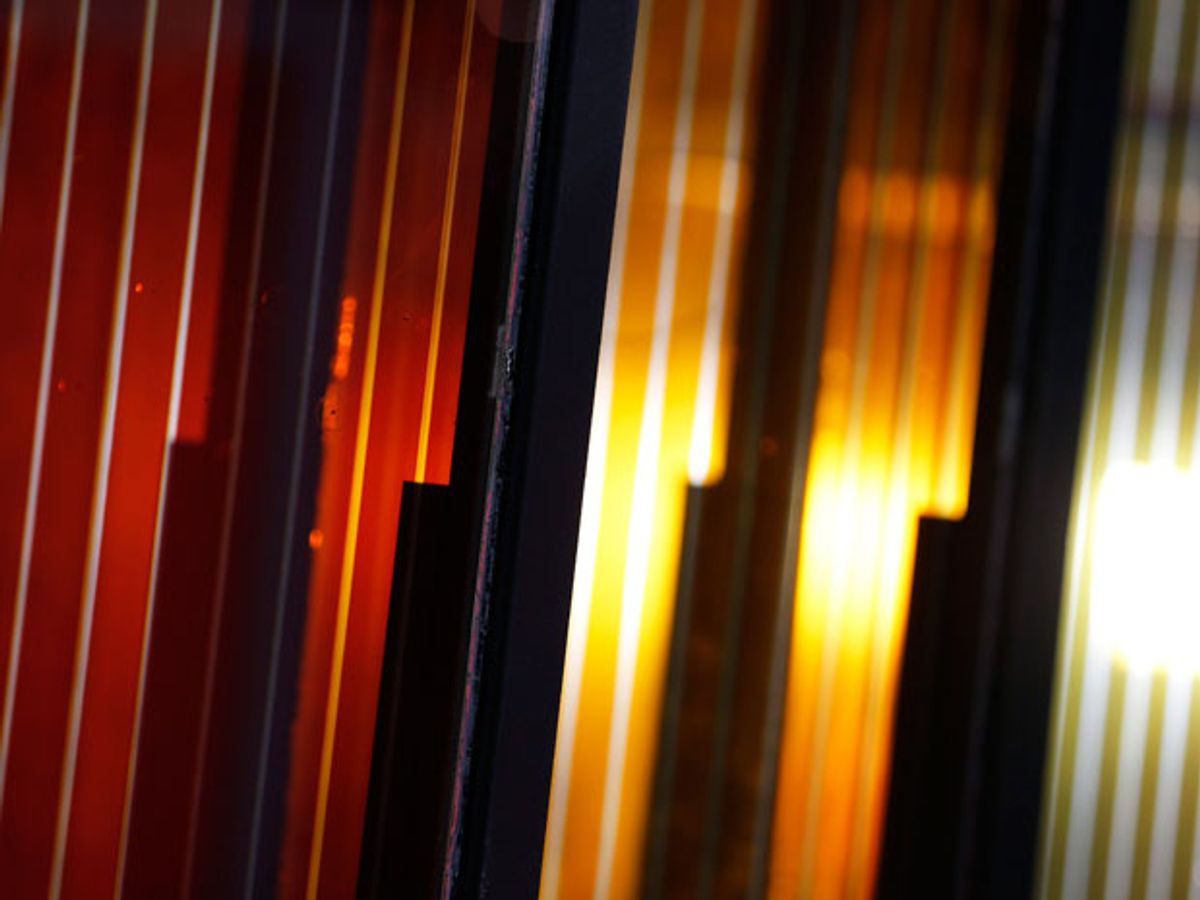Researchers at the University of Basel have developed a method by which iodine is replaced in copper-based, dye-sensitized solar cells (DSSCs) (also known as the Grätzel cell) with more abundant and less expensive cobalt.
The replacement of iodine should make the future of DSSC more sustainable because its manufacture will no longer depend on a relatively scarce element.
“Iodine is a rare element, only present at a level of 450 parts per billion in the Earth, whereas cobalt is 50 times more abundant,” explained the Project Officer Biljana Bozic-Weber in a press release.
Perhaps more important than improving the sustainability of manufacturing DSSCs, the replacement of the iodine should lengthen the lifetime of DSSCs, which have been criticized for their short lifespans. Typically in copper-based DSSCs the copper reacts with the iodine in the electrolyte to create copper iodide, which degrades the DSSCs.
The research, which was published in the journal Chemical Communications (“Copper(I) dye-sensitized solar cells with [Co(bpy)3]2+/3+ electrolyte”), represents the first time that copper-based dyes and cobalt electrolytes have been successfully combined in DSSCs, and it has accomplished this feat without any loss of performance.
DSSCs have served as an indication of what is possible with nanomaterials in photovoltaics. DSSC technology produces a photovoltaic cell that is relatively inexpensive compared to its silicon cousins. However, the technology does come with some downsides of which the most significant is that it cannot produce the same level of energy conversion efficiency as silicon solar cells. But as one of the co-discoverers of the technology, Michael Grätzel, explained to me two years ago, DSSC does not need to compete with silicon directly because it has lots of application niches for which it really is the only game in town, such as interior, low-light conditions.
At the time of that interview with Grätzel, it was becoming apparent that high efficiency DSSCs, which had been first introduced in 1991 and really just started to hit the market in 2009 with the introduction of flexible and light-weight devices, were on the verge of becoming a viable commercial alternative in photovoltaics.
In fact, just a year after my interview with Grätzel, researchers were reporting a solid-state dye-sensitized solar cell that matched the performance of a Grätzel cell. One of the researchers on that project, Mercouri Kanatzidis, rather eloquently explained where we were at that point in the development of DSSC technology: “The Grätzel cell is like having the concept for the light bulb but not having the tungsten wire or carbon material.”
The Basel researchers concede that their current results are a long way from changing the commercial landscape of DSSCs. However, if their long-term aims are achieved, the issue of comparatively poor energy conversion efficiency could at least partly be improved. This improvement, they say, will be accomplished through an approach called "Molecular Systems Engineering" in which all the molecular and material components, such as in DSSCs, can be integrated and optimized to approach new levels efficiency.
"In changing any one component of these solar cells, it is necessary to optimize all other parts as a consequence," said Ed Constable, one of the other researchers, in a press release.
Photo: Kiyoshi Ota/EPA/Landov
Dexter Johnson is a contributing editor at IEEE Spectrum, with a focus on nanotechnology.



